The Andyson Platinum R 1200W PSU Review
by E. Fylladitakis on April 24, 2015 8:00 AM EST- Posted in
- Cases/Cooling/PSUs
- 1200W
- 80Plus Platinum
- Andyson
The Andyson Platinum R 1200W PSU - Internal Design
ADDA supplies the cooling fan of this PSU. The ADN512DB-A91 has a 135mm wide frame, a ball bearing motor and a maximum speed of just 1500 RPM, which is relatively conservative for a 1200W PSU.
There is no "hidden OEM" behind the Platinum R 1200W as Andyson designs and creates their own PSUs and this unit is entirely of their own making. What someone immediately notices about the layout is that there are very few wires. Andyson went as far as to mount the AC receptacle and switch on a PCB that comes in direct contact with the main PCB of the unit.
The filtering stage begins on that small PCB and continues on the main PCB of the unit, comprising of four Y capacitors, two X capacitors and two filtering inductors. A surge-suppressing MOV can also be found. The primary conversion bridges share their own small heatsink right after the filtering stage.
Three Nippon Chemi-Con 400V/470μF capacitors and a very large inductor are the passive components of the APFC stage. These capacitors are exceedingly large, even for a 1200W PSU, which explains the presence of two NTC thermistors to moderate the inrush current of the PSU. The active components for the APFC, two transistors and a diode, are attached to the large heatsink next to the capacitors. Smaller, simple heatsinks hold the four transistors of the primary inversion stage, which form a full-bridge configuration. The eight secondary conversion stage transistors are on an even simpler heatsink that is nothing more than a thin sheet of metal.
Only a 12V output is generated by the secondary conversion stage of this PSU. Thick metal bars form current pathways, transferring the output of the unit to the vertical PCB that holds the cable connectors. The 3.3V and 5V DC-to-DC conversion circuits are present on this PCB, eliminating the losses that would occur if they were generated on the main PCB and then transferred on this one.
Most of the secondary capacitors, electrolytic and polymer alike, are supplied by Teapo. Only a few Nippon Chemi-Con electrolytic capacitors on the vertical PCB are an exception. Teapo is not the favorite manufacturer among enthusiasts but it is true that their products are being used more and more in high-end products. Andyson covers this unit with a ten year warranty, so they either feel very confident that Teapo is reliable enough or they severely oversized the capacitors in order to counter their aging.
Quality-wise, the design is almost impeccable. The layout is very well designed and clean, while the soldering job is immaculate. There is just one dissonance that feels like a rookie's mistake: right next to the secondary conversion stage and towards the secondary PCB, where the metallic bars transfer the current from one PCB to another, Andyson had to place a capacitor between a tall electrolytic and a short polymer. For unknown reasons, much likely because Andyson is oversizing the components across the layout to ensure high performance and reliability, this capacitor could not fit where it was supposed to. Andyson circumvented this by gluing the capacitor on the adjacent components and insulating its leads, which are soldered on the main PCB nearly two centimeters below. This is not a critical problem but it is something that just does not match the aptness of the rest of the unit.


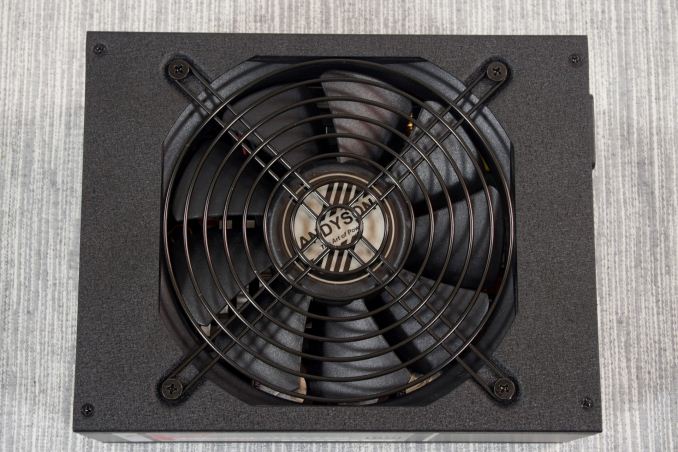
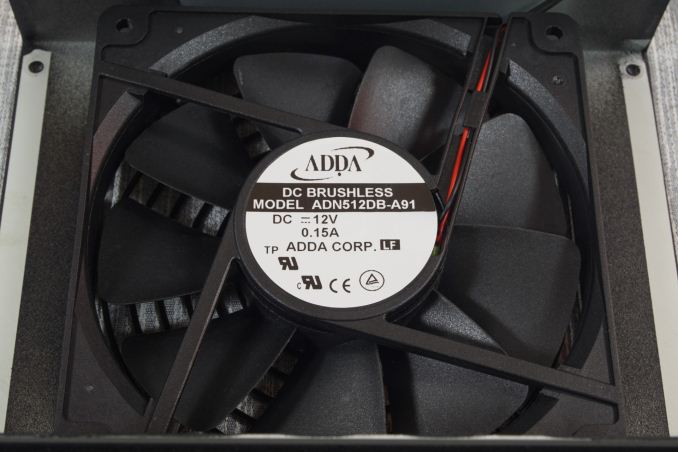
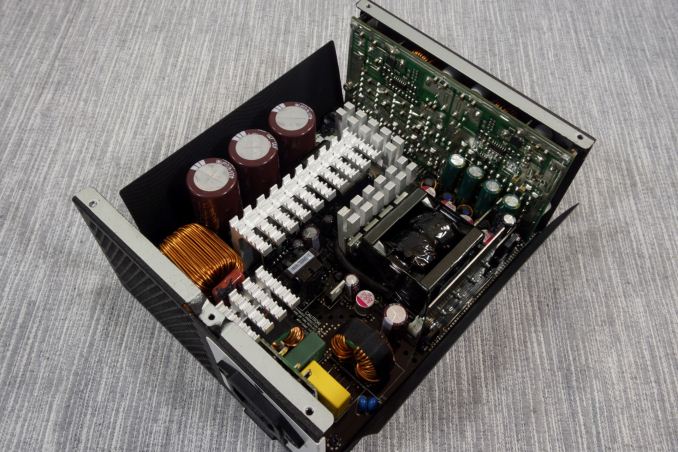
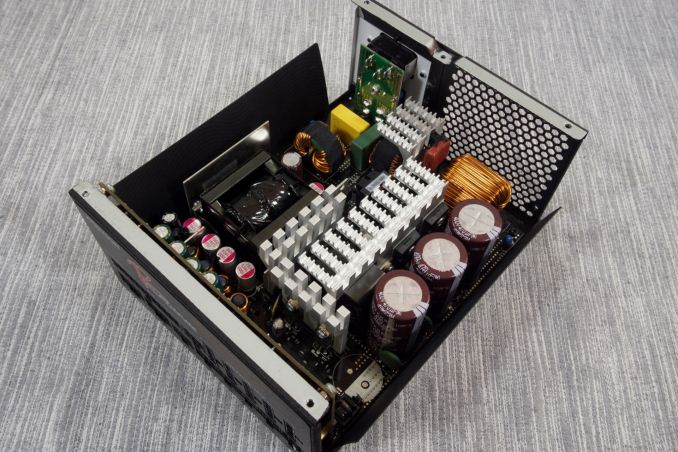
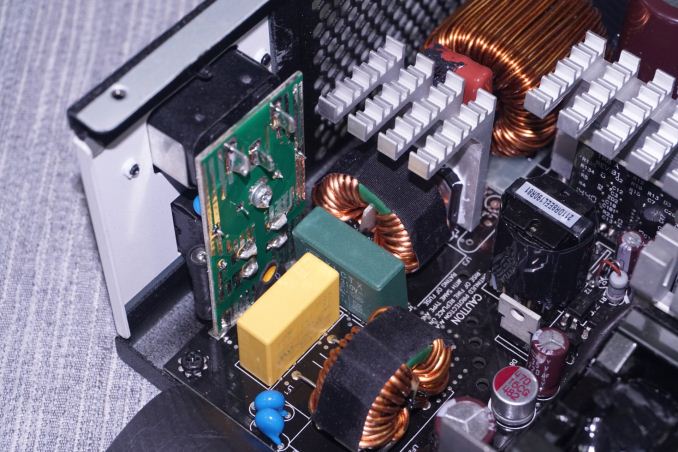
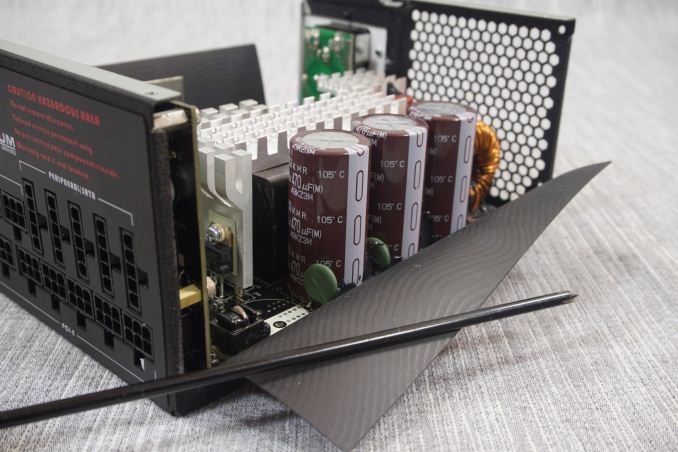

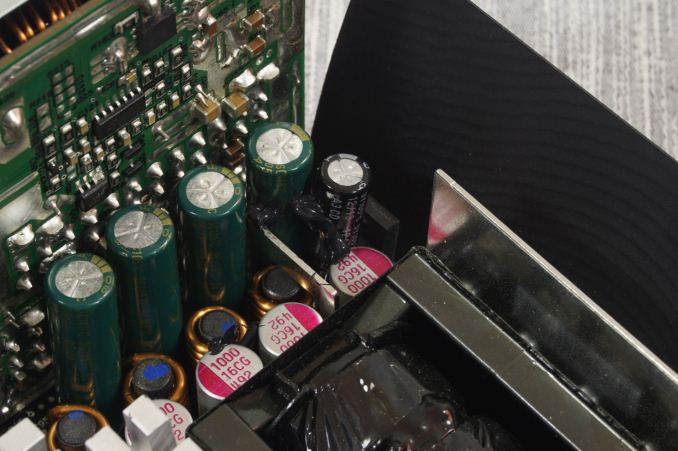








46 Comments
View All Comments
ImSpartacus - Saturday, April 25, 2015 - link
I agree.I couldn't care less about giant PSUs.
I want to see reviews of ~500W PSUs because that's the kind of PSU that I would buy.
E.Fyll - Monday, April 27, 2015 - link
You see, the problem is that good <550 Watts PSUs are very rare. In the order of $50, you will get something that works OK and that's about it. Will it really matter if the ripple is 90mV instead of 75mV, or if the average efficiency is 95% instead of 95.3%?Besides,manufacturers do not easily supply samples of such products. I've already discussed the reasons why not many times over. The few good low power units that exist, I am trying to source them. Silver stone sent in a 450 watt unit and we might be getting somewhere with Andyson too.
And no, I cannot just buy the samples. Especially from newegg.
The0ne - Saturday, April 25, 2015 - link
They won't listen lol, it's like they're being paid to do the article...wait a minute, I may be on to something!ImSpartacus - Saturday, April 25, 2015 - link
Yeah, the author says it up front:"When it comes to high performance >1 kW computer power supplies, almost every reputable OEM has released at least one design to serve as their flagship. This is not necessarily because the companies expect high revenue because they are well aware that this segment of the market is very small and overly saturated. They do this because the flagship serves as a symbol of the company's capabilities and competence, enhancing their profile on all fronts in order to produce that halo product, hoping the performance of the high end results in trickle-down sales."
But that doesn't justify it. The bottom line is that I read Anandtech reviews because I want to be educated about potential purchases. However, I'll never purchase a 1000+W PSU. That's just wasteful.
I want relevant reviews and Anandtech needs to demands relevant PSU review units.
JonnyDough - Tuesday, April 28, 2015 - link
Agreed. I own 10 computers, 8 of which are gaming PCs. None have more than a 750w PSU in them, and none will ever need to.computex128 - Wednesday, April 29, 2015 - link
Drop the insanity and buy a dual-GPU card like the rest of us certifiably sane folk :PLoneWolf15 - Friday, April 24, 2015 - link
Andyson didn't just suffer because of Hiper.Remember Ultra power supplies? First modular units made, now house brand of Tiger Direct? Andyson. Many failures, old designs, horrible voltage regulation, never meeting load specs....that's a lot of Andyson PSUs made for the vendors they supply to. While it could be that vendors want Andyson to make cheap units, I wouldn't touch one, even one that rates well. You can do better with other choices.
DanNeely - Friday, April 24, 2015 - link
Thank you for updating your testing methodology to reflect the continued decline in the amount of power available on the legacy (3.3/5v) rails in more modern designs.Laststop311 - Saturday, April 25, 2015 - link
Because legacy systems used lower voltage more. Nowadays everything is 12 volts.CrazyElf - Friday, April 24, 2015 - link
The most important things to consider are:1. Voltage regulation under load
2. Ripple suppression
3. Long term reliability
I would ignore the 80 Plus as it's mostly marketing.
Good power supplies are made by Delta (OEM), Super Flower (their Leadex platform is pretty good), Seasonic, and I would argue some of the Flextronics designs are pretty good too. Brand is mostly for warranty support - it's the OEM that really counts.